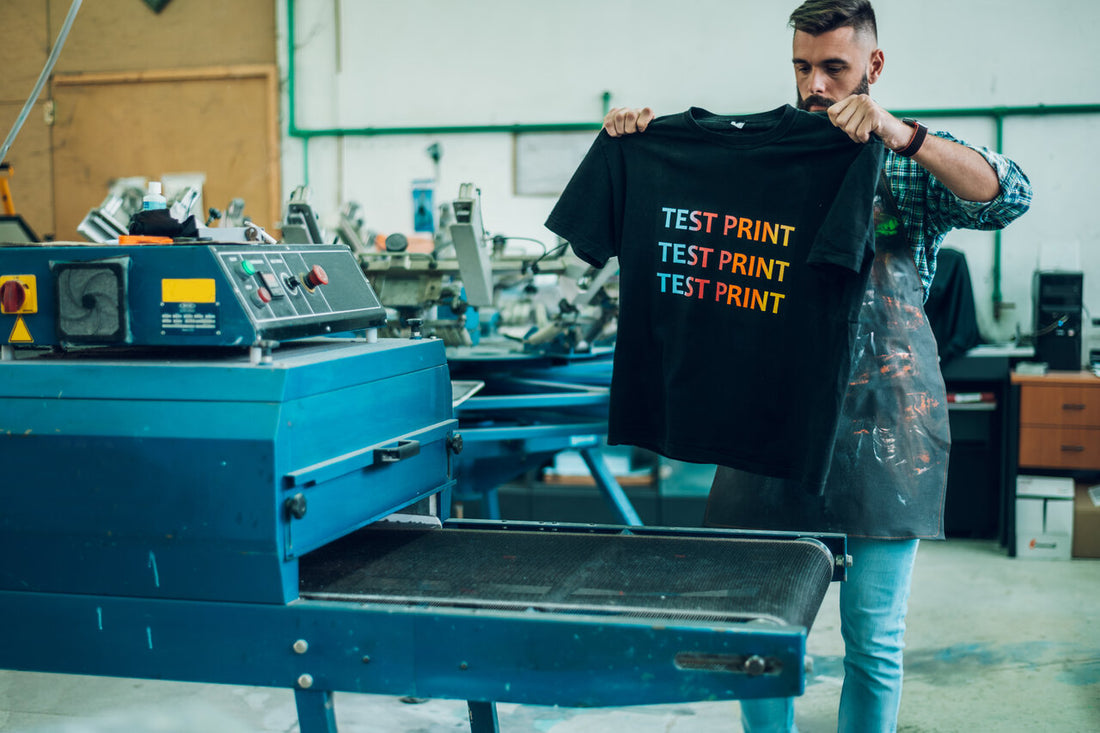As the global apparel industry shifts toward more environmentally friendly and sustainable practices, it is crucial for businesses to adapt and stay ahead of the curve. As the Southeast's #1 Source for DTF Transfer Films, we recognize the importance of incorporating sustainability into your Direct-to-Film (DTF) printing business. That's why we've prepared this comprehensive guide highlighting essential tips and techniques focused on making your DTF printing processes eco-friendly without compromising on quality and customer satisfaction.
Join us as we delve into various strategies aimed at improving sustainability in your DTF printing operations—from selecting eco-friendly inks and materials to minimizing waste and conserving energy. With a focus on both environmental benefits and customer appeal, we will explore innovative ways to implement green practices alongside high-quality DTF printing, ultimately setting you apart from competitors and positioning your business as a leader in eco-friendly apparel production.
1. Choosing Eco-Friendly DTF Inks and Chemicals
The first and foremost step in making your DTF printing process greener is opting for eco-friendly inks and chemicals. By using water-based inks instead of the traditional plastisol-based inks, you minimize the environmental impact and toxic byproducts of your printing operations. When selecting eco-friendly inks, consider the following factors:
- Green Certifications: Look for inks with green certifications, such as OEKO-TEX® Standard 100 or Global Organic Textile Standard (GOTS), which ensure that the inks meet rigorous environmental and health standards.
- Rapid Biodegradability: Choose inks with rapid biodegradability to minimize the long-term environmental impact, as they break down more quickly and release fewer harmful substances into the ecosystem.
- Low VOCs: Opt for inks with low volatile organic compounds (VOCs) to reduce air pollution and improve workplace conditions by minimizing the release of toxic fumes during the printing process.
2. Utilizing Sustainable Garment Materials
Selecting sustainable materials for your garments is crucial in achieving an eco-friendly DTF printing process. There are several types of sustainable fabrics available in the market that are both environmentally friendly and compatible with DTF printing. Here are some options to consider:
- Organic Cotton: Organic cotton is grown without the use of toxic pesticides or synthetic fertilizers, making it an eco-friendly alternative to conventional cotton.
- Recycled Polyester: By using recycled polyester made from post-consumer plastic waste, you reduce the demand for virgin materials and contribute to the reduction of plastic pollution.
- Tencel™: This sustainable fabric is derived from renewable wood sources and is produced using a closed-loop production process, in which water and solvents are recycled, minimizing environmental impact.
3. Adopting Energy-Efficient Practices
Integrating energy-saving strategies into your DTF printing operations can significantly reduce your environmental footprint and lower your energy costs. Consider implementing the following practices to minimize energy consumption in your business:
- Energy-Efficient Equipment: Invest in energy-efficient DTF printers and heat presses that have lower energy demands, or look for devices with an Energy Star rating.
- Proper Maintenance: Regularly maintain your equipment to ensure optimal performance and prevent energy waste. This includes cleaning the printer and heat press, as well as updating firmware and software as needed.
- Power-Saving Modes: Whenever possible, use power-saving settings on your equipment, such as standby mode, when the equipment is not in use.
- Optimize Workspace Layout: Organize your workspace to ensure efficient workflow and minimize energy use, such as positioning your equipment to facilitate smooth transitions between production stages.
4. Minimizing Waste and Repurposing Excess Materials
Reducing waste is an essential aspect of sustainable DTF printing. Implement best practices to minimize waste during the printing process and repurpose or recycle excess materials whenever possible. Some strategies include:
- Efficient Inventory Management: Adopt just-in-time production methods to prevent excess inventory and minimize textile waste.
- Precise Printing Settings: Optimize your printer settings to reduce ink and transfer film waste during the printing process.
- Reusable Resources: Utilize reusable resources, such as pallets, screens, and stencil films, to minimize waste generation.
- Repurpose Excess Materials: Instead of discarding excess fabric or misprinted garments, repurpose them into new products such as cleaning cloths, tote bags, or other promotional items.
Conclusion
Embracing sustainability in your DTF printing business is crucial in the ever-evolving apparel industry and a smart move for success. By choosing eco-friendly inks and chemicals, utilizing sustainable garment materials, adopting energy-efficient practices, and minimizing waste, you can significantly reduce the environmental impact of your DTF printing operations and cater to eco-conscious consumers.
Going green in your DTF printing business not only contributes to a healthier planet but also sets you apart from competitors and positions your business as a leader in sustainable apparel production. By continuously exploring and integrating innovative and environmentally responsible practices, you can ensure long-term growth and success in the dynamic world of direct-to-film printing while creating a positive change for the environment.
Are you ready to take your print game to the next level? Look no further than Southeast Prints – the leading Direct-to-Film printing provider in the Southeast United States.
Our cutting-edge DTF printing technology allows us to provide vibrant, high-quality prints on a wide range of fabrics and substrates. Whether you're a small shop, hobbyist, or major brand, we have the skills and expertise to bring your designs to life with stunning clarity and precision.
At Southeast Prints, we're committed to quality, efficiency, and your satisfaction. Our high-quality DTF print transfers are perfect for anyone in need of bright whites, solids, gradients, or fine lines – with virtually no limit to what we can print!
Don't settle for mediocre prints. Choose Southeast Prints and experience the difference that comes with working with a trusted industry leader. Contact us today to learn more about our services and how we can help take your prints to the next level.

